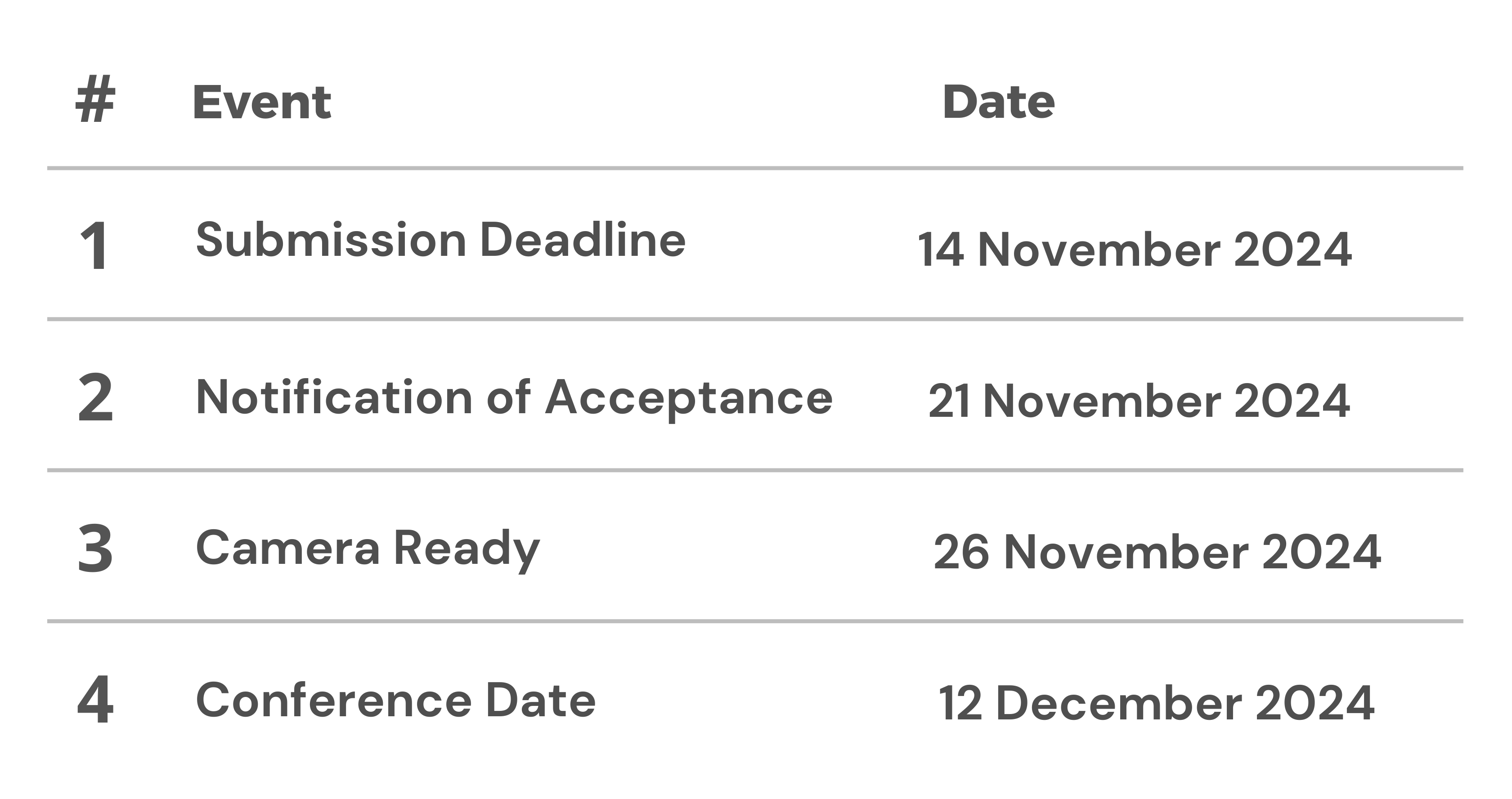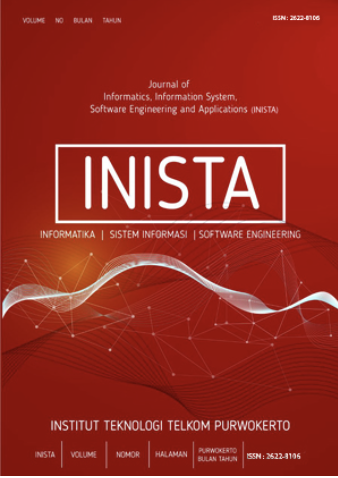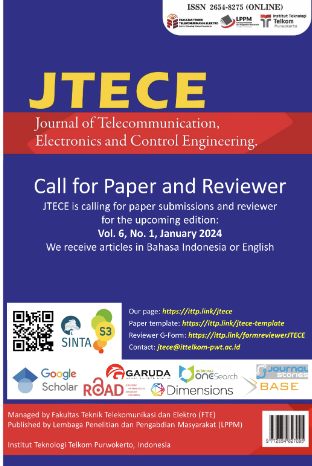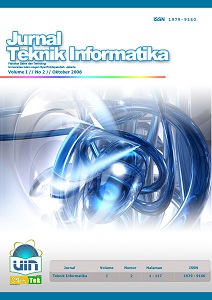LOAD BALANCING PROTOCOL LEACH IN WIRELESS SENSOR NETWORK
Abstract
Jaringan sensor nirkabel adalah sejenis jaringan ad-hoc yang terdiri dari sensor terdistribusi untuk memantau kondisi fisik dan lingkungan yang bersifat otonom. Protocol LEACH adalah salah satu protocol yang dapat memperpanjang umur wireless sensor network dengan membentuk cluster untuk routing dalam jaringan skala besar. Modifikasi yang diusulkan dalam protocol LEACH memungkinkan node alternatif untuk menggantikan di tempat node yang kehilangan energinya sehingga memperpanjang masa hidup seleuruh jaringan dan menghindari kehilangan data. Wireless sensor network dengan multi sink memiliki beberapa kelemahan. Salah satu contoh adalah mengkonsumsi energi yang lebih cepat dari pada node yang lain. Load balancing adalah metode untuk menyamakan konsumsi energy semua node. Dengan load balancing, masa hidup suatu jaringan tidak hanya tergantung pada kehidupan node yang lemah tetapi tergantung pada kehidupan semua node dalam jaringan yang membantu meningkatkan kehidupan suatu jaringan. Dalam makalah ini, kami memeriksa algoritma load balancing yang diusulkan untuk jaringan wireless sensor. Oleh karena itu, makalah ini juga dapat memberikan kepada pembaca untuk penelitian dalam skema load balancing protocol LEACH wireless sensor network.
References
[2] T. K. Mishra and R. K. Paul, “A Survey on Load Balancing Techniques for Wireless Sensor Networks,” Int. J. Adv. Res. Comput. Commun. Eng., vol. 6, no. 2, pp. 342–348, 2017.
[3] A. Wahab, F. A. Mustika, R. B. Bahaweres, D. Setiawan, and M. Alaydrus, “Energy efficiency and loss of transmission data on Wireless Sensor Network with obstacle,” in 2016 10th International Conference on Telecommunication Systems Services and Applications (TSSA), 2016, no. Radar Technology (2017), pp. 1–6.
[4] P. Hurni and T. Braun, “Energy-Efficient Multi-path Routing in Wireless Sensor Networks,” Adhoc-Now 2008, Lncs 5198, pp. 72–85, 2008.
[5] S. Meguerdichian, F. Koushanfar, G. Qu, and M. Potkonjak, “Exposure in wireless Ad-Hoc sensor networks,” Proc. 7th Annu. Int. Conf. Mob. Comput. Netw. - MobiCom ’01, pp. 139–150, 2001.
[6] H. D. H. Dai and R. Han, “A node-centric load balancing algorithm for wireless sensor networks,” GLOBECOM ’03. IEEE Glob. Telecommun. Conf. (IEEE Cat. No.03CH37489), vol. 1, no. JANUARY 2004, pp. 548–552, 2003.
[7] A. Syarif, I. Benyahia, A. Abouaissa, L. Idoumghar, R. F. Sari, and P. Lorenz, “Evolutionary Multi-Objective Based Approach for Wireless Sensor Network Deployment.”
[8] G. Xu, W. Shen, and X. Wang, “Applications of wireless sensor networks in marine environment monitoring: A survey,” Sensors (Switzerland), vol. 14, no. 9, pp. 16932–16954, 2014.
[9] G. Gupta and M. Younis, “Load-Balanced Clustering in Wireless Sensor Networks,” Commun. 2003. ICC ’03. IEEE Int. Conf., pp. 1848–1852, 2003.













